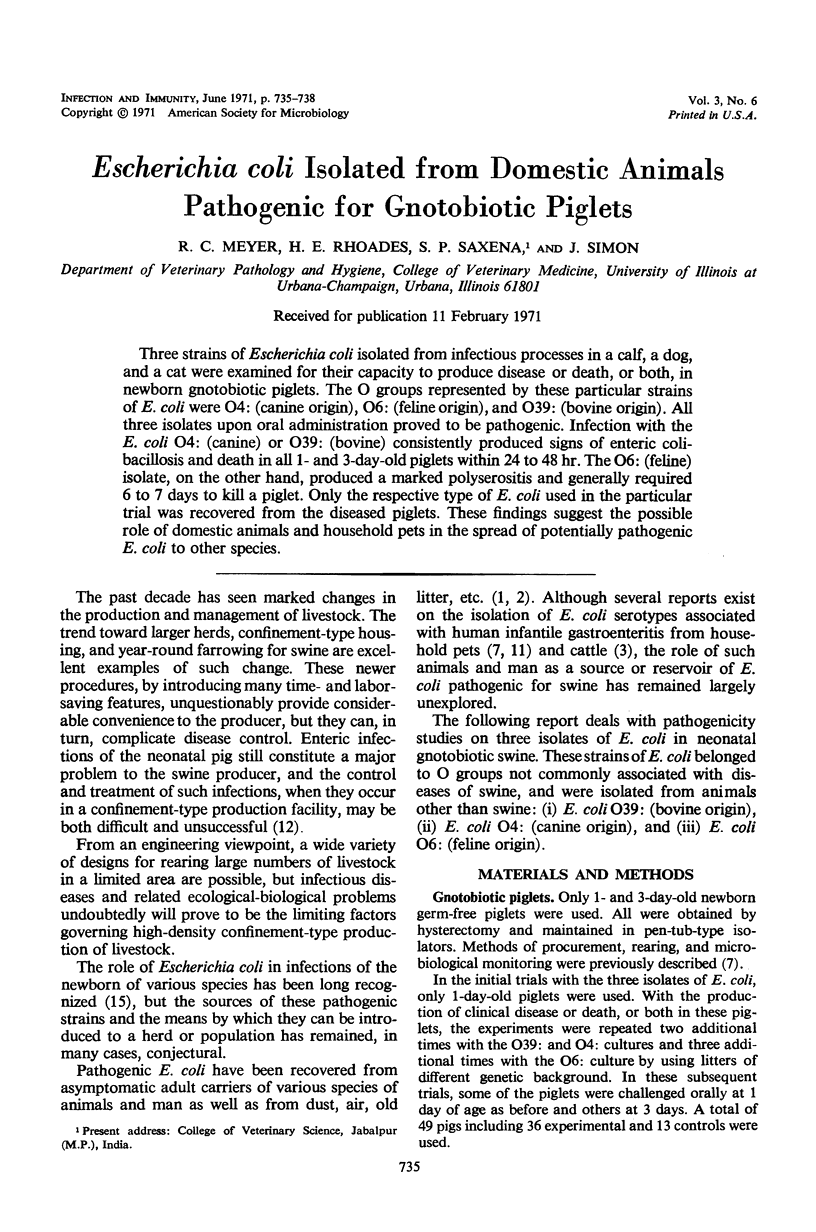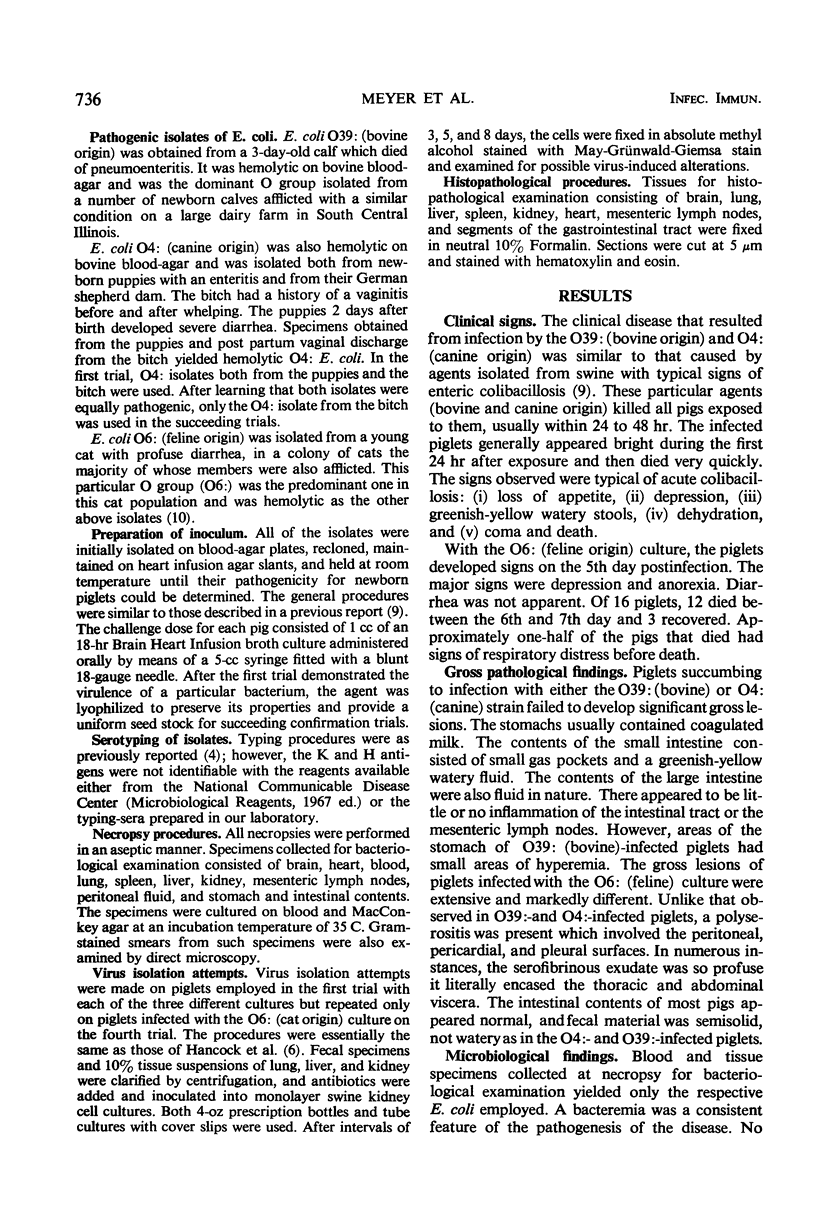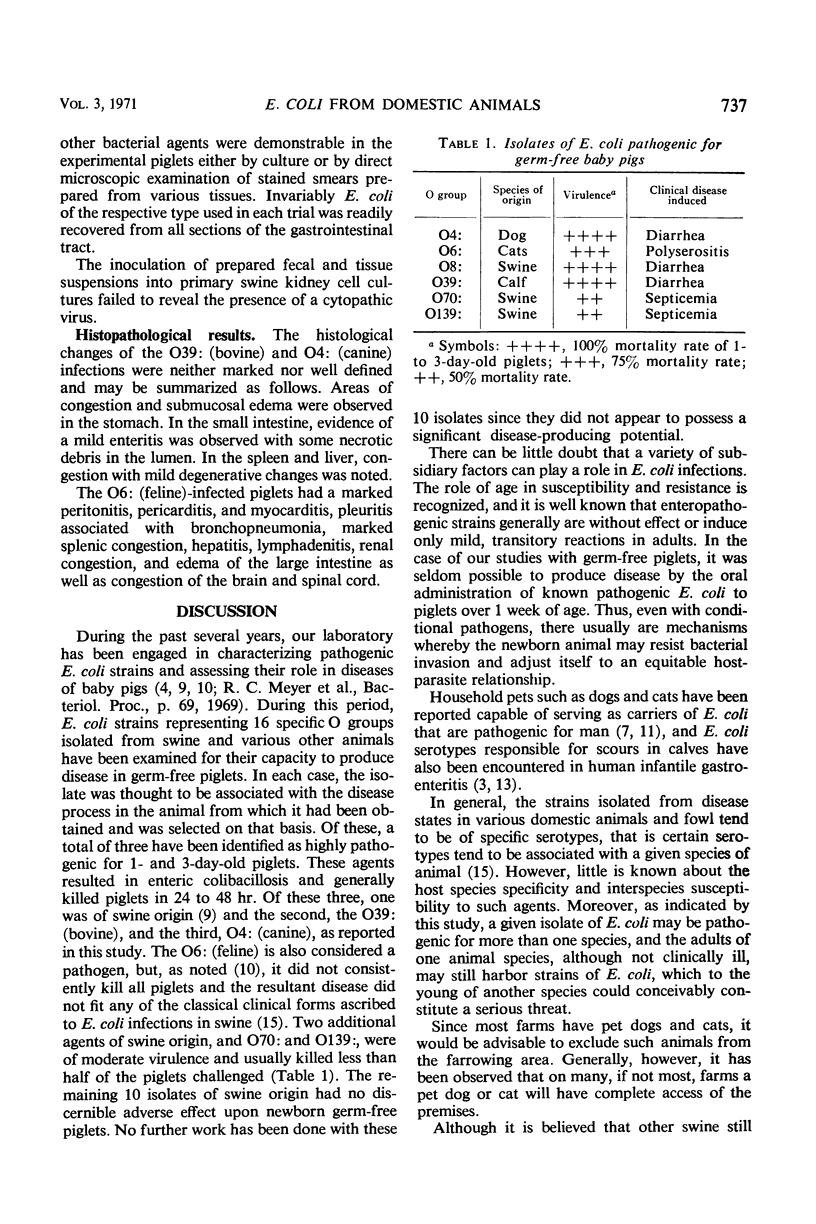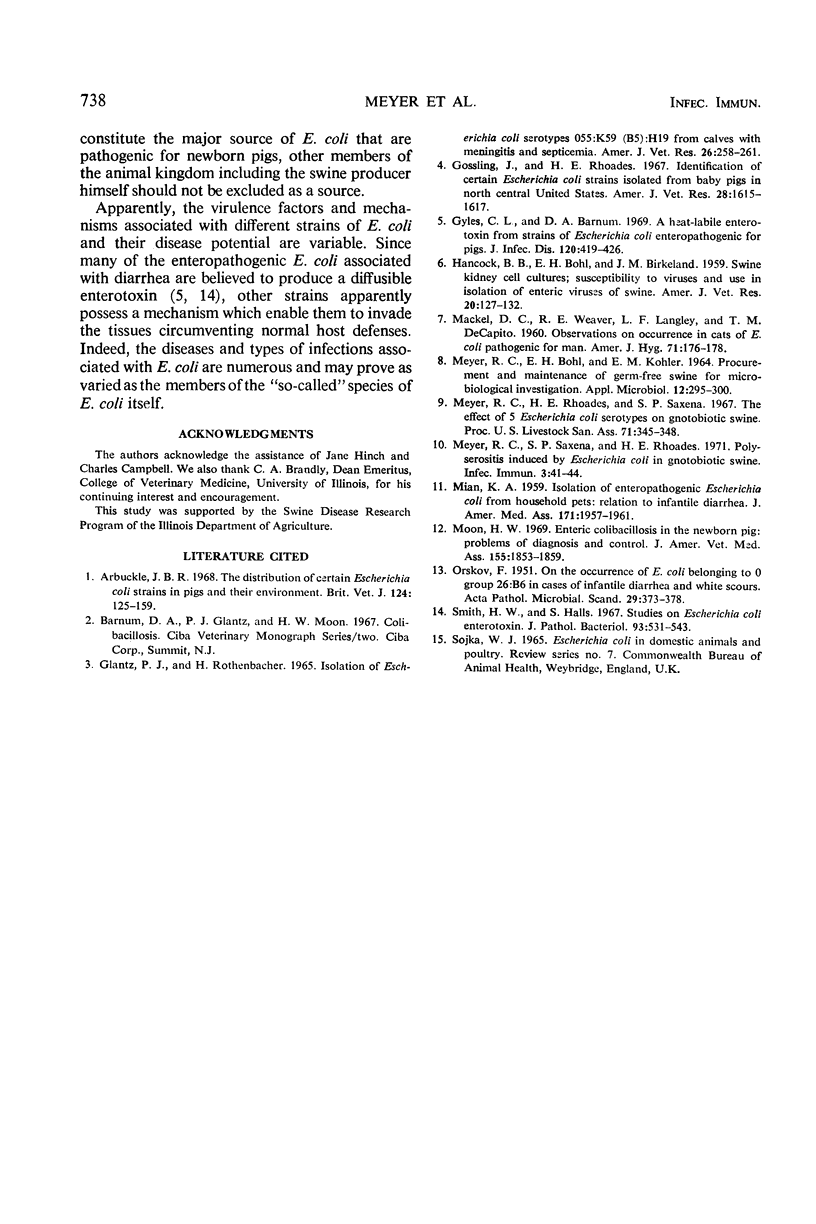Abstract
Three strains of Escherichia coli isolated from infectious processes in a calf, a dog, and a cat were examined for their capacity to produce disease or death, or both, in newborn gnotobiotic piglets. The O groups represented by these particular strains of E. coli were O4: (canine origin), O6: (feline origin), and O39: (bovine origin). All three isolates upon oral administration proved to be pathogenic. Infection with the E. coli O4: (canine) or O39: (bovine) consistently produced signs of enteric coli-bacillosis and death in all 1- and 3-day-old piglets within 24 to 48 hr. The O6: (feline) isolate, on the other hand, produced a marked polyserositis and generally required 6 to 7 days to kill a piglet. Only the respective type of E. coli used in the particular trial was recovered from the diseased piglets. These findings suggest the possible role of domestic animals and household pets in the spread of potentially pathogenic E. coli to other species.
Full text
PDF



Selected References
These references are in PubMed. This may not be the complete list of references from this article.
- Arbuckle J. B. The distribution of certain Escherichia coli strains in pigs and their environment. Br Vet J. 1968 Apr;124(4):152–159. doi: 10.1016/s0007-1935(17)39454-x. [DOI] [PubMed] [Google Scholar]
- GLANTZ P. J., ROTHENBACHER H. ISOLATION OF ESCHERICHIA COLI SEROTYPE 055: K59(B5): H19 FROM CALVES WITH MENINGITIS AND SEPTICEMIA. Am J Vet Res. 1965 Mar;26:258–261. [PubMed] [Google Scholar]
- Gossling J., Rhoades H. E. Identification of certain Escherichia coli strains isolated from baby pigs in north central United States. Am J Vet Res. 1967 Sep;28(126):1615–1617. [PubMed] [Google Scholar]
- Gyles C. L., Barnum D. A. A heat-labile enterotoxin from strains of Eschericha coli enteropathogenic for pigs. J Infect Dis. 1969 Oct;120(4):419–426. doi: 10.1093/infdis/120.4.419. [DOI] [PubMed] [Google Scholar]
- HANCOCK B. B., BOHL E. H., BIRKELAND J. M. Swin kidney cell cultures-susceptibility to viruses and use in isolation of enteric viruses of swine. Am J Vet Res. 1959 Jan;20:127–132. [PubMed] [Google Scholar]
- MACKEL D. C., WEAVER R. E., LANGLEY L. F., DECAPITO T. M. Observations on occurrence in cats of Escherichia coli pathogenic for mn. Am J Hyg. 1960 Mar;71:176–178. doi: 10.1093/oxfordjournals.aje.a120101. [DOI] [PubMed] [Google Scholar]
- MEYER R. C., BOHL E. H., KOHLER E. M. PROCUREMENT AND MAINTENANCE OF GERM-FREE SEINE FOR MICROBIOLOGICAL INVESTIGATIONS. Appl Microbiol. 1964 Jul;12:295–300. doi: 10.1128/am.12.4.295-300.1964. [DOI] [PMC free article] [PubMed] [Google Scholar]
- Meyer R. C., Rhoades H. E., Saxena S. P. The effect of 5 Escherichia coli serotypes on gnotobiotic swine. Proc Annu Meet U S Anim Health Assoc. 1967;71:345–348. [PubMed] [Google Scholar]
- Meyer R. C., Saxena S. P., Rhoades H. E. Polyserositis Induced by Escherichia coli in Gnotobiotic Swine. Infect Immun. 1971 Jan;3(1):41–44. doi: 10.1128/iai.3.1.41-44.1971. [DOI] [PMC free article] [PubMed] [Google Scholar]
- Moon H. W. Enteric colibacillosis in the newborn pig: problems of diagnosis and control. J Am Vet Med Assoc. 1969 Dec 15;155(12):1853–1859. [PubMed] [Google Scholar]
- Smith H. W., Halls S. Studies on Escherichia coli enterotoxin. J Pathol Bacteriol. 1967 Apr;93(2):531–543. doi: 10.1002/path.1700930212. [DOI] [PubMed] [Google Scholar]
- ØRSKOV F. On the occurrence of E. coli belonging to O-group 26 in cases of infantile diarrhoea and white scours. Acta Pathol Microbiol Scand. 1951;29(4):373–378. [PubMed] [Google Scholar]


